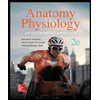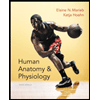Which of the following explains the mechanism of inhalation? An increase in temperature inside the lungs allows for more oxygen to enter the lungs. An increase in atmospheric pressure creates a pressure gradient that forces air inside the lungs, causing them to expand in volume. An increase in chest cavity volume increases the number of moles of oxygen gas inside the lungs. A decrease in chest cavity volume increases the internal pressure and leads to a decrease in the number of moles of oxygen inside the lungs.
Which of the following explains the mechanism of inhalation? An increase in temperature inside the lungs allows for more oxygen to enter the lungs. An increase in atmospheric pressure creates a pressure gradient that forces air inside the lungs, causing them to expand in volume. An increase in chest cavity volume increases the number of moles of oxygen gas inside the lungs. A decrease in chest cavity volume increases the internal pressure and leads to a decrease in the number of moles of oxygen inside the lungs.
Human Anatomy & Physiology (11th Edition)
11th Edition
ISBN:9780134580999
Author:Elaine N. Marieb, Katja N. Hoehn
Publisher:Elaine N. Marieb, Katja N. Hoehn
Chapter1: The Human Body: An Orientation
Section: Chapter Questions
Problem 1RQ: The correct sequence of levels forming the structural hierarchy is A. (a) organ, organ system,...
Related questions
Question
No answer from chat gpt will dislike.
Give proper explanation of the correct option and proper explanation of the incorrect options

Transcribed Image Text:Which of the following explains the mechanism of inhalation?
An increase in temperature inside the lungs allows for more oxygen to enter the
lungs.
An increase in atmospheric pressure creates a pressure gradient that forces air
inside the lungs, causing them to expand in volume.
An increase in chest cavity volume increases the number of moles of oxygen gas
inside the lungs.
A decrease in chest cavity volume increases the internal pressure and leads to a
decrease in the number of moles of oxygen inside the lungs.
Expert Solution
This question has been solved!
Explore an expertly crafted, step-by-step solution for a thorough understanding of key concepts.
Step by step
Solved in 3 steps

Recommended textbooks for you

Human Anatomy & Physiology (11th Edition)
Anatomy and Physiology
ISBN:
9780134580999
Author:
Elaine N. Marieb, Katja N. Hoehn
Publisher:
PEARSON

Anatomy & Physiology
Anatomy and Physiology
ISBN:
9781259398629
Author:
McKinley, Michael P., O'loughlin, Valerie Dean, Bidle, Theresa Stouter
Publisher:
Mcgraw Hill Education,

Human Anatomy
Anatomy and Physiology
ISBN:
9780135168059
Author:
Marieb, Elaine Nicpon, Brady, Patricia, Mallatt, Jon
Publisher:
Pearson Education, Inc.,

Human Anatomy & Physiology (11th Edition)
Anatomy and Physiology
ISBN:
9780134580999
Author:
Elaine N. Marieb, Katja N. Hoehn
Publisher:
PEARSON

Anatomy & Physiology
Anatomy and Physiology
ISBN:
9781259398629
Author:
McKinley, Michael P., O'loughlin, Valerie Dean, Bidle, Theresa Stouter
Publisher:
Mcgraw Hill Education,

Human Anatomy
Anatomy and Physiology
ISBN:
9780135168059
Author:
Marieb, Elaine Nicpon, Brady, Patricia, Mallatt, Jon
Publisher:
Pearson Education, Inc.,

Anatomy & Physiology: An Integrative Approach
Anatomy and Physiology
ISBN:
9780078024283
Author:
Michael McKinley Dr., Valerie O'Loughlin, Theresa Bidle
Publisher:
McGraw-Hill Education

Human Anatomy & Physiology (Marieb, Human Anatomy…
Anatomy and Physiology
ISBN:
9780321927040
Author:
Elaine N. Marieb, Katja Hoehn
Publisher:
PEARSON